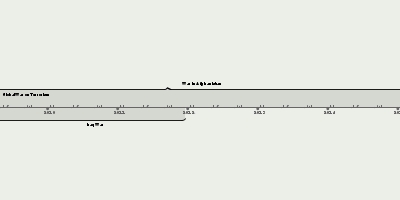Gulf War (2 agos 1990 año – 28 feb 1991 año)
Descripción:
The Gulf War was an armed conflict between Iraq and a 42-country coalition led by the United States. The coalition's efforts against Iraq were carried out in two key phases: Operation Desert Shield, which marked the military buildup from August 1990 to January 1991; and Operation Desert Storm, which began with the aerial bombing campaign against Iraq on January 17th, 1991 and came to a close with the American-led liberation of Kuwait on February 28th, 1991.On August 2nd, 1990, Iraq, governed by Saddam Hussein, invaded neighboring Kuwait and fully occupied the country within two days. The invasion was primarily over disputes regarding Kuwait's alleged slant drilling in Iraq's Rumaila oil field, as well as to cancel Iraq's large debt to Kuwait from the recently ended Iran-Iraq War. After Iraq briefly occupied Kuwait under a rump puppet government known as the Republic of Kuwait, it split Kuwait's sovereign territory into the Saddamiyat al-Mitla' District in the north, which was absorbed into Iraq's existing Basra Governorate, and the Kuwait Governorate in the south, which became Iraq's 19th governorate.
The invasion of Kuwait was met with immediate international condemnation, including the adoption of UN Security Council Resolution 660, which demanded Iraq's immediate withdrawal from Kuwait, and the imposition of comprehensive international sanctions against Iraq with the adoption of UN Security Council Resolution 661. British prime minister Margaret Thatcher and U.S. president George H. W. Bush deployed troops and equipment into Saudi Arabia and urged other countries to send their own forces. Many countries joined the American-led coalition forming the largest military alliance since World War II. The bulk of the coalition's military power was from the United States, with Saudi Arabia, the United Kingdom, and Egypt as the largest lead-up contributors, in that order.
United Nations Security Council Resolution 678, adopted on November 29th, 1990, gave Iraq an ultimatum, expiring on January 15th, 1991, to implement Resolution 660 and withdraw from Kuwait, with member-states empowered to use "all necessary means" to force Iraq's compliance. Initial efforts to dislodge the Iraqis from Kuwait began with aerial and naval bombardment of Iraq on January 17th, which continued for five weeks. As the Iraqi military struggled against the coalition attacks, Iraq fired missiles at Israel to provoke an Israeli military response, with the expectation that such a response would lead to the withdrawal of several Muslim-majority countries from the coalition. The provocation was unsuccessful; Israel did not retaliate and Iraq continued to remain at odds with most Muslim-majority countries. Iraqi missile barrages against coalition targets in Saudi Arabia were also largely unsuccessful, and on February 24th, 1991, the coalition launched a major ground assault into Iraqi-occupied Kuwait. The offensive was a decisive victory for the coalition, who liberated Kuwait and promptly began to advance past the Iraq-Kuwait border into Iraqi territory. A hundred hours after the beginning of the ground campaign, the coalition ceased its advance into Iraq and declared a ceasefire. Aerial and ground combat was confined to Iraq, Kuwait, and areas straddling the Iraq-Saudi Arabia border.
The conflict marked the introduction of live news broadcasts from the front lines of the battle, principally by the American network CNN. It has also earned the nickname Video Game War, after the daily broadcast of images from cameras onboard American military aircraft during Operation Desert Storm. The Gulf War has also gained fame for some of the largest tank battles in American military history: the Battle of Medina Ridge, the Battle of Norfolk, and the Battle of 73 Easting.
Añadido al timeline:
fecha:
2 agos 1990 año
28 feb 1991 año
~ 7 months
